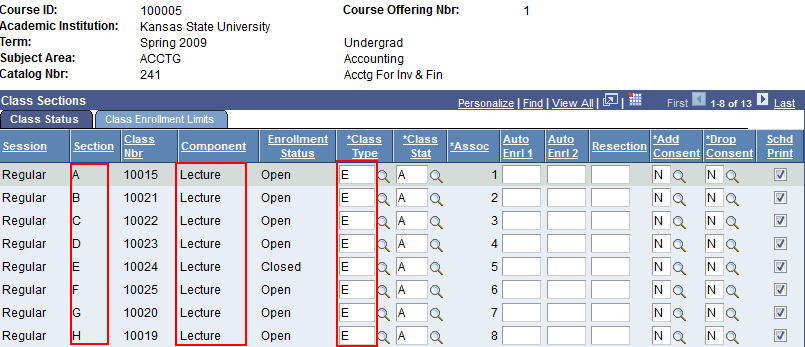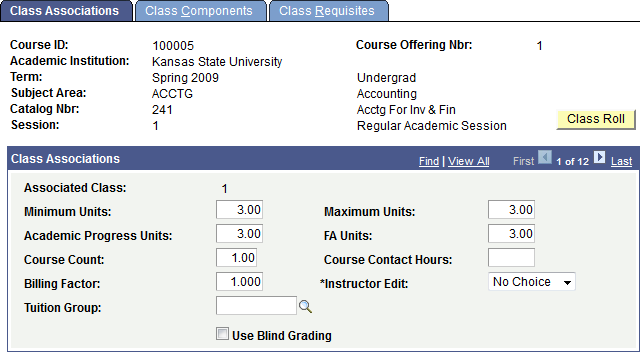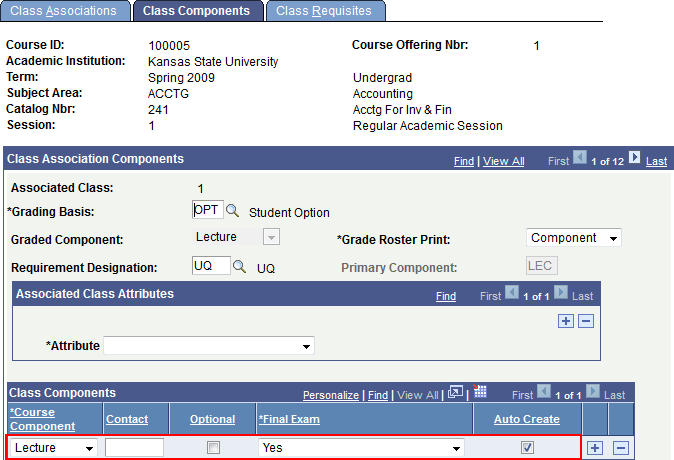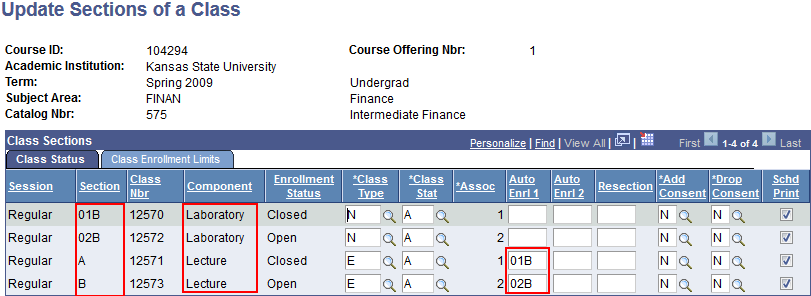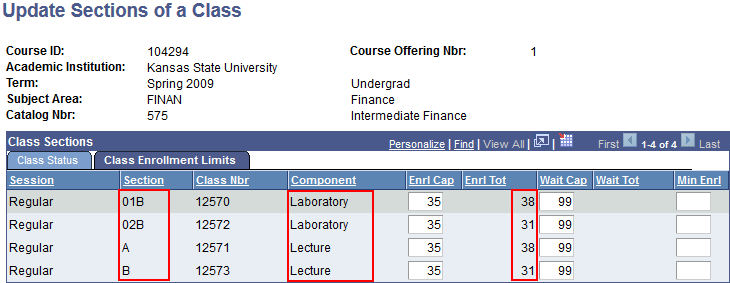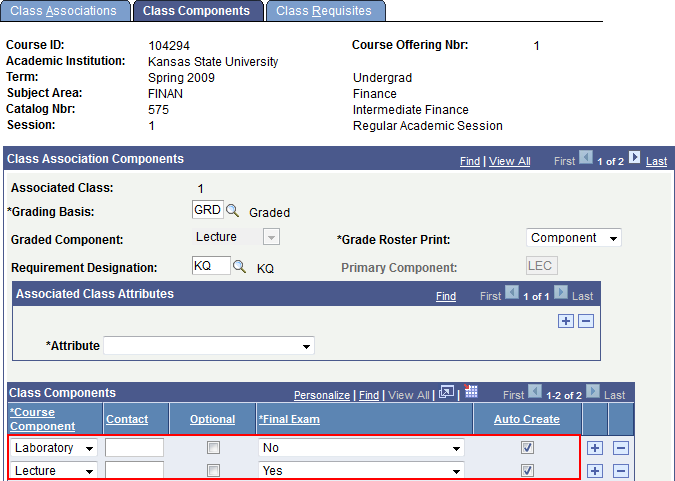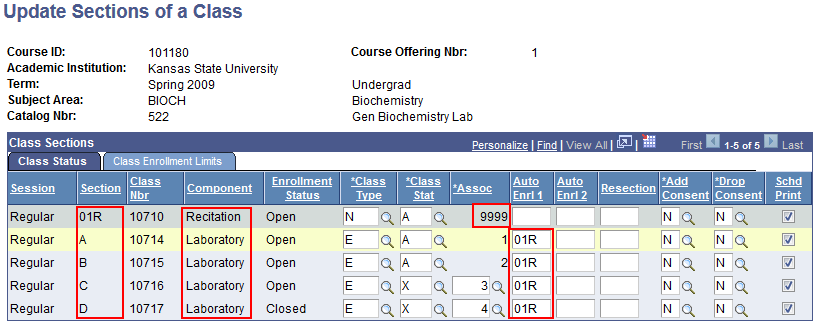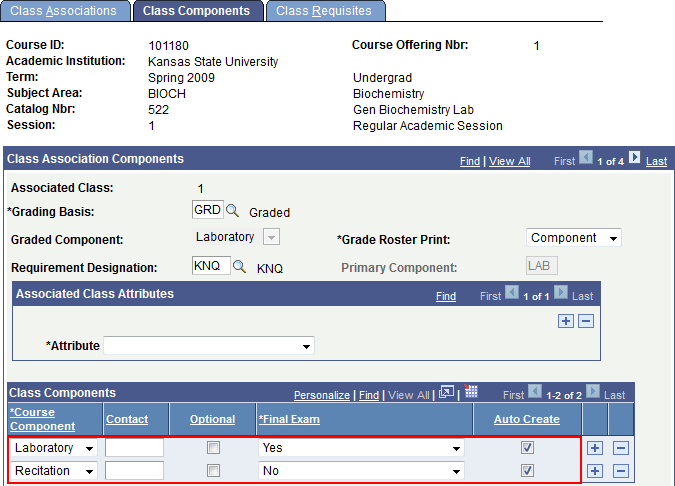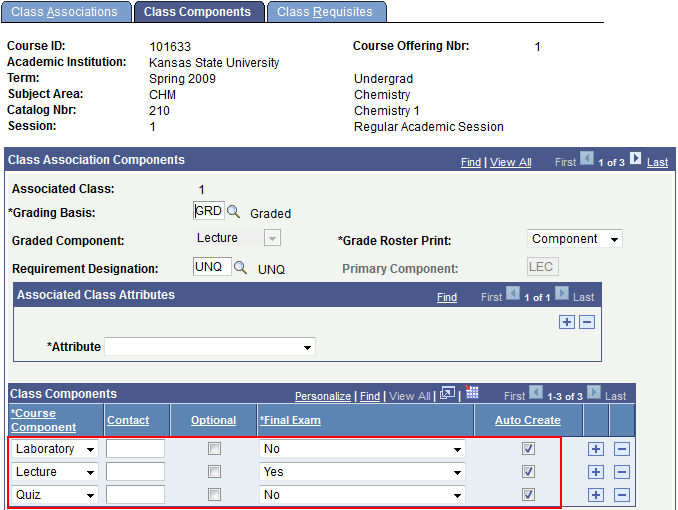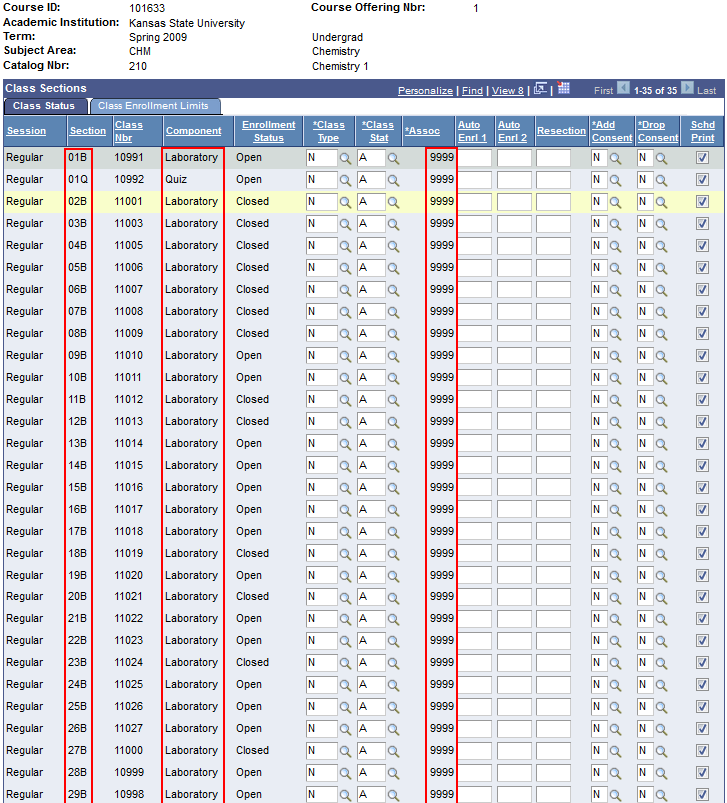- K-State home
- KSIS
- Help
- for Staff
- Understanding Class Associations
Understanding Class Associations
| Purpose | Use this procedure to set up sections of a class that are associated with one another |
| Menu Path |
Use the following menu path(s) to begin this task: · Curriculum Management > Schedule of Classes > Update Sections of a Class
|
| KSIS Report |
· Curriculum Management > Schedule of Classes > KSU Reports > Update Sections of a class |
Class Sections must each have a unique name in KSIS. When naming a class section use the following guidelines:
|
Enrollment/Graded Sections use alphabetic indicators. EX: A, B, C..... |
|
Non-Enrollment components start with a number followed by a suffix. The most common are:
Single digit number classes begin with a 0 (zero). All components of a class must have separate Class Numbers in KSIS. Examples: 01B, 02B, 02R, 03Q, 04R, etc...
|
Class Components can be various activities that are part of a class such as Lab, Lecture, Quiz, Recitation, etc... Definitions for components are found at Rules for Assigning the Section Values.
|
When using multiple components for a class, use the following guidelines:
|
Class Type indicates which component of the class receives the grade.
|
Associated Class is an additional class identifier that is used to link class sections that constitute a single course offering. Associated Classes must be unique for each Enrollment (graded) component.
|
When naming Associated Class components, use the following guidelines:
|
Auto Enrollment automatically enrolls a student in all components associated with the Enrollment (graded) component in which they enrolled.
|
Common Types of Class Associations:
- Only one component is required for student enrollment
- All components are named the same
- The Associated Class is unique for each enrollment component
|
The Class Status tab shows all sections below have a unique name, are the same component and are all Enrollment components which receive the grade.
|
|
The Class Associations tab indicates a single class.
|
|
The Class Components tab displays only the Lecture component.
|
- More than one component is required for each student enrollment
- The Enrollment component receives the grade for all components
- Additional Non-Enrollment component(s) match one-to-one with a specific Enrollment component
- The Associated Class is unique for each Enrollment component
- each has a matching Non-Enrollment component
- The Enrollment component has Auto-Enrollment for the Non-Enrollment component
- The Enrollment Capacity for the Enrollment component should equal that of the matching Non-Enrollment component
|
The Class Status tab Demonstrates a Lecture with a Laboratory component. Each lectures is tied to only one lab.
|
|
The Class Enrollment Limits tab indicates the Enrollment cap and Enrollment total for each class section.
|
|
The Class Components tab displays both the Lecture and the Laboratory components of the class as well as in which component the Final Exam occurs.
|
- More than one component is required for each student enrollment (such as LEC and REC)
- The Enrollment component receives the grade for all components
- The student selects in which additional Non-Enrollment component to enroll
- The Associated Class is unique for the Enrollment component
- The Non-Enrollment component uses the value of 9999 which indicates the student may select any one of the associated components
- Auto-Enrollment is not used
- Use the Class Enrollment Limits tab to compare the Enrollment Capacity (Enrl Cap) for the Enrollment component to the total of the Non-Enrollment section capacities
|
This Class Status tab demonstrates a Recitation with multiple possible Laboratory components in which a student can enroll. The Auto Enrl for each Laboratory indicates the Recitation will automatically enrolled for any lab selected.
|
|
The Class Components tab indicates both Laboratory and Recitation components are included in the class.
|
- More than one component is required for each student enrollment (such as LEC, LAB and QZ)
- There are multiple Enrollment components that receives the grade for all related components (in this example LEC is the Enrollment component)
- A student may be auto-enrolled in a Non-Enrollment component (optional - in this example 01Q is auto-enrolled)
- A student selects an additional Non-Enrollment component (in this example the student chooses any LAB with any LEC)
- The Associated Class has a unique indicator (A, B, C...) while the Non-Enrollment section is indicated by 9999
- Make sure to compare the total f the Enrollment section capacities on the Class Enrollment Limits tab to the Non-Enrollment section capacities
|
This Class Component tab below demonstrates a class that includes Lecture, Laboratory and Quiz components.
|
|
The Class Status tab below shows a single Quiz and multiple Laboratory components that are associated with three Lectures. The Quiz component is auto-enroll and the Laboratory can be selected by the student (9999).
|
